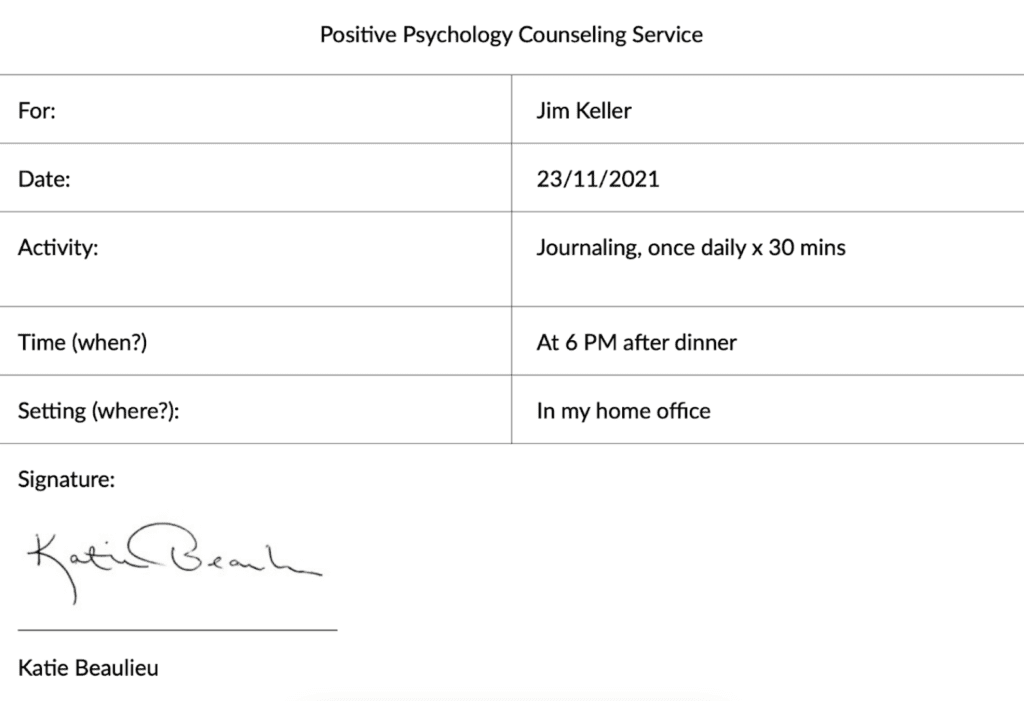
The pain of losing someone can be all-consuming
It can feel like a physical ache or a wave of completely unexpected emotions like anger, guilt, or even relief. For others, it’s a spiritual challenge, casting doubt on our firmest beliefs. The last time we confronted the heartbreak of losing a loved one, none of it was textbook. Our path is uniquely personal.
You may relate to these experiences, and you probably have your own to add to the list. Death is a universal certainty, and it touches us all in unique ways.
But you know what?
Many of us who live through loss still believe that there is a ‘right’ way to experience it and that a linear path lies ahead of us. To resolve our suffering and restore a sense of normalcy, we assume we must take certain steps – mourning, anger, bargaining – whatever we’ve heard is ‘best.’
It’s drummed in by the media: “Stay active; stick to a routine.” You may get advice from others: “You’ll feel better soon. Try not to worry about it so much.”
Even psychological frameworks for grief and bereavement are pretty formulaic. We believe the only thing worth knowing about grief is that it’s complex.
Don’t worry too much about when you’ll get through it, and don’t judge yourself for not being able to take the pain away. As distressing, agonizing, or confusing as it is, your path to adjustment is uniquely personal. And you, like we did, will get there in your own time.
Grief is only love, a song by Stephen Wilson Jr. encapsulates the process of grieving quite nicely; he sings: grief is only love that’s got no place to go. We reference this here as a way of suggesting that you can find a way to redirect the love you feel for the person you lost in ways that can enrich your life.
Your path is uniquely personal
As distressing, agonizing, or confusing as it is, your path to adjustment is uniquely personal. And you, like we did, will get there in your own time.
We would like to introduce you to the Prescription to Grieve Tool. It is a wonderful way to allow yourself to open up to your grief and move through it.
This tool was created by Dr. Lucinda Poole.
Prescription to Grieve Tool
The mock medical “prescription” to grieve tool aims to provide grieving individuals with a structured, time-limited framework to express their grief. Rather than being held hostage by intrusive emotionality, this exercise allows individuals to grieve on their terms.
While losing a loved one is a natural, universally experienced life event, it is also one of the most challenging experiences a person will ever go through [4]. For many people, losing a loved one is followed by an intensely emotional and disruptive period. Experiencing the death of a loved one is highly stressful, both because of the loss and because of confrontation with mortality. Numerous stressors also emerge as the bereaved person attends various events and services that are out of the ordinary. Coping with these is necessary for the restoration of a satisfying and meaningful life [4].
Many bereaved people meet the coping demands with the help of support or community and find a path that leads to restoration of ongoing life [4]. Some people, however, do not cope effectively with bereavement. They become entangled in grief and caught up in denial, trying to avoid reminders and focusing helplessly on intrusive waves of painful emotion [4].
The prescription to grieve exercise is designed to guide and contain a bereaved person’s grief experience while facilitating emotional catharsis [1, 2]. Just as one receives a prescription for a medication, grieving clients are given a prescription to grieve their loss. This prescription includes details of the recommended length of time to grieve regularly or weekly, the place where their grief work will take place, and approaches to carry out this grief work. In this way, the prescription provides bereaved individuals with a structured, time-limited framework to express their grief, supporting, and in a way, granting them permission to express and release their thoughts and feelings of loss.
How to use the Prescription to Grieve Tool
- Use a timer to signal the duration of your grieving time (e.g., kitchen timer, phone alarm). Doing so not only frees you to focus completely on the task at hand, but it also enforces the time limit, which is important, as research has found that 30 minutes is typically insufficient while devoting more than an hour to grief unnecessarily prolongs the experience [1].
- If you want to express your grief through drawing, you might like to delve deeper into the Drawing Grief tool at the end of this article.
- When selecting a setting (Step 2), you must choose a place that provides you with a sense of connection to your loss and enhances your experience of thoughts and feelings while not diverting attention. Therefore, public places or places unfamiliar to you are not ideal, as these types of places could be quite distracting.
- “note” any thoughts and feelings about your loss outside of your prescribed time slot. “Noting” is a mindfulness technique where one acknowledges the thought or feeling (by simply noting “thought” or “feeling”) without following or engaging with it. You may say to yourself “grief thought” or “grief feeling” and then refocus on whatever you are doing at that moment.
- This tool would be particularly helpful for those who find their grief is overwhelming, unpredictable, and interferes with daily activities.
References
- Janson, M. A. H. (1985). The prescription to grieve. The Hospice Journal, 1(1), 103-109.
- Humphrey, K. M. (2009). Counseling strategies for loss and grief. American Counseling Association.
- Manning, D. (1979). Don’t take my grief away from me. In-Sight Books, Inc.
- Shear, M. K. (2012). Grief and mourning gone awry: Pathway and course of complicated grief. Dialogues in clinical neuroscience, 14(2), 119.
Step By Step
“Grieving is as natural as crying when you are hurt, sleeping when you are tired, eating when you are hungry, or sneezing when your nose itches. It is nature’s way of healing a broken heart.”
– Doug Manning (1979)
Grief is the natural emotional response to losing someone (or something) we love. It often involves intense sadness and sometimes feelings of shock, numbness, or even anger. Grief affects everyone differently. It can be exhausting, emotionally draining, and intrusive, making it hard to do simple things or even leave the house.
In this exercise, you will complete a “prescription to grieve.” Just as you would receive a prescription for a medication, the idea here is to prescribe yourself a time and place to grieve your loss. Your path us uniquely personal. Your script will detail when, where, and how you will experience your grief to provide some structure around your grief journey. An example of a completed prescription is shown in Appendix A.
Step 1: Your path is uniquely personal. Choose an activity
Choose how you will carry out your grief work. You can express your grief in several ways, such as journaling, drawing, or memory-making. The idea is to become absorbed in your grief experience, allowing yourself to fully experience any thoughts and feelings connected to the person (or situation) you have lost. See Appendix C for information on a few different grieving activities. Once you have chosen an activity, write this down in your script (Appendix B).
Note, you might like to do different grief activities on different days. You are not “locked-in” to the grief activity that you write down in your script. Please choose whatever feels right and good to you on the day.
Step 2: Your path is uniquely personal. Choose a time
Choose a time of the day for when you will carry out your grief work. It is important to choose a time to focus entirely on grieving your loss for 45 minutes. This time slot should be a time where you will not be disturbed by others. When choosing a time, think about a time in the day when you typically notice your grief is quite strong, as this would be a suitable time slot to choose (so long as you are generally undisturbed at this time). Write down the time you have selected in your script (Appendix B).
Step 3: Your path is uniquely personal. Choose a setting
Now, set the scene for your grief work. Take a moment to think about where you would ideally like to carry out this exercise. Your chosen location should be somewhere you feel very comfortable, safe, and undisturbed, like at home. It could be a place that connects you with your loved one, such as his/her bedroom, a place that offers you a sense of calm and contemplation (e.g., garden, porch), or a place that is familiar and comfortable to you (e.g., your bedroom). You may also choose to bring any items that help you feel connected to your loss, like clothing, photographs, or music you loved together. Write down the location you have chosen in your script (Appendix B).
Step 4: Sign your prescription
The final step now is to sign your prescription. Think of your signature as your commitment to carrying out this exercise. The idea of spending 45 minutes each day feeling and experiencing the difficult thoughts and feelings tied to your grief might be slightly overwhelming, which is normal. However, take comfort in the fact that for the other 23 hours and 15 minutes of your day, your grieving is, in a way, turned “off.” You can go about your everyday life, noting any thoughts or feelings related to your loss. You may also stop the exercise at any time, take a break, and try again the next day.

Appendix A – This is an example

Appendix B – Create a table in your diary same as above.
Alternatively:
Express your grief through drawing: Drawing Grief Tool
Step 1: Introduction
In this exercise, you are going to try drawing a picture of your grief. You can draw whatever you like, whatever feels right for you today. Your drawing may take the form of a self-portrait, a place at which you think you are right now, a picture of yourself in relation to your loss, how your relationships have changed since the loss, or your thoughts and feelings about your loss. Alternatively, your drawing may take the form of something entirely different. You may use any of the materials here to do this.
Step 2: Start drawing
Take a moment to think about what you might like to draw. When you are ready, you can start. You have half an hour to work on your drawing, but if you finish before then, that is perfectly fine.
Step 3: Reflect on your drawing
When you finish, take a moment to reflect on the following:
- How was it for you to do this exercise?
- What elements make up your drawing? What do these different elements mean to you?
- What feelings and emotions showed up for you as you were drawing?
- How are you feeling now?
- What do you think your drawing says about you and where you are in your grieving process?
Grief—the loss of a loved one, our full health, a relationship, a job, or a pet. We all experience it at some point. We miss what was and fear the future without it. Sometimes lack of closure or unanswered questions can leave us feeling confused, incomplete, and even resentful.
Remember that it is ok to feel the way you are feeling. Allow yourself to sit with your emotions while taking care not to allow negative emotions to dominate.
Reach out for support if you need to.
- Guest Author: Frederike Leclerc
- Image Source: Eoghan Brennan
+ show Comments
- Hide Comments
add a comment